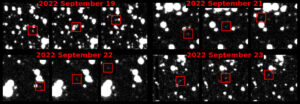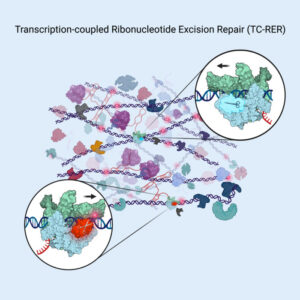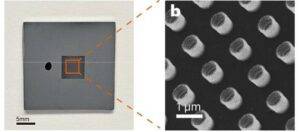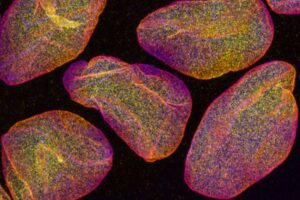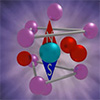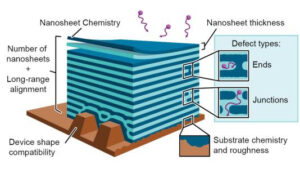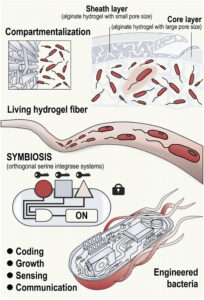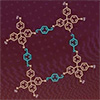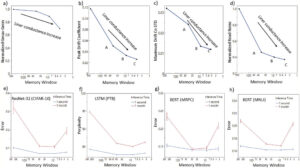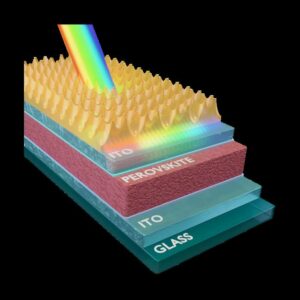02. június 2023. (Nanowerk News) A Tohoku Egyetem és a Tsinghua Egyetem kutatói új generációs modellmembránelektródát mutattak be, amely az alapvető elektrokémiai kutatások forradalmasítását ígéri. Ez az innovatív, aprólékos eljárással előállított elektróda üreges óriások rendezett sorát mutatja be. szén nanocsövek (gCNTs) within a nanoporous membrane, unlocking new possibilities for energy storage and electrochemical studies.
The key breakthrough lies in the construction of this novel electrode. The researchers developed a uniform carbon coating technique on anodic aluminum oxide (AAO) formed on an aluminum substrate, with the barrier layer eliminated. The resulting conformally carbon-coated layer exhibits vertically aligned gCNTs with nanopores ranging from 10 to 200 nm in diameter and 2 µm to 90 µm in length, covering small electrolyte molecules to bio-related large matters such as enzymes and exosomes.
Unlike traditional composite electrodes, this self-standing model electrode eliminates inter-particle contact, ensuring minimal contact resistance – something essential for interpreting the corresponding electrochemical behaviors.
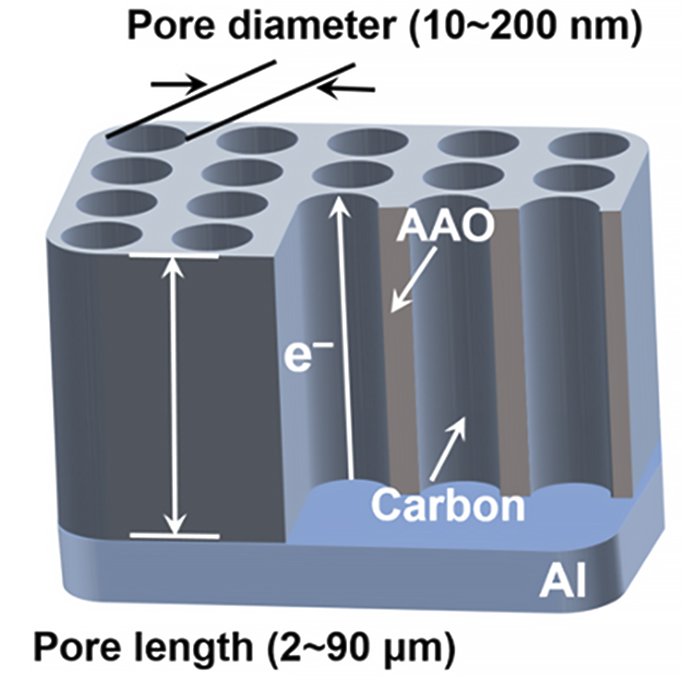 Model membrane electrode showing a wide range of controllability on the pore dimensions. (Image: Tohoku University)
“The potential of this model electrode is immense,” stated Dr. Zheng-Ze Pan, one of the corresponding authors of the study. “By employing the model membrane electrode with its extensive range of nanopore dimensions, we can attain profound insights into the intricate electrochemical processes transpiring within porous carbon electrodes, along with their inherent correlations to the nanopore dimensions.”
Moreover, the gCNTs are composed of low-crystalline stacked grafén lapok, offering unparalleled access to the electrical conductivity within low-crystalline carbon walls. Through experimental measurements and the utilization of an in-house temperature-programmed desorption system, the researchers constructed an atomic-scale structural model of the low-crystalline carbon walls, enabling detailed theoretical simulations.
Dr. Alex Aziz, who carried out the simulation part for this research, points out, “Our advanced simulations provide a unique lens to estimate electron transitions within amorphous carbons, shedding light on the intricate mechanisms governing their electrical behavior.”
This project was led by Prof. Dr. Hirotomo Nishihara, the Principal Investigator of the Device/System Group at Advanced Institute for Materials Research (WPI-AIMR). The findings are detailed in Fejlett funkcionális anyagok (“Nanoporous Membrane Electrodes with an Ordered Array of Hollow Giant Carbon Nanotubes”). Végső soron a tanulmány jelentős előrelépést jelent az amorf alapú porózus szénanyagok és azok különböző elektrokémiai rendszerek szondázásában való alkalmazásának megértésében.
Model membrane electrode showing a wide range of controllability on the pore dimensions. (Image: Tohoku University)
“The potential of this model electrode is immense,” stated Dr. Zheng-Ze Pan, one of the corresponding authors of the study. “By employing the model membrane electrode with its extensive range of nanopore dimensions, we can attain profound insights into the intricate electrochemical processes transpiring within porous carbon electrodes, along with their inherent correlations to the nanopore dimensions.”
Moreover, the gCNTs are composed of low-crystalline stacked grafén lapok, offering unparalleled access to the electrical conductivity within low-crystalline carbon walls. Through experimental measurements and the utilization of an in-house temperature-programmed desorption system, the researchers constructed an atomic-scale structural model of the low-crystalline carbon walls, enabling detailed theoretical simulations.
Dr. Alex Aziz, who carried out the simulation part for this research, points out, “Our advanced simulations provide a unique lens to estimate electron transitions within amorphous carbons, shedding light on the intricate mechanisms governing their electrical behavior.”
This project was led by Prof. Dr. Hirotomo Nishihara, the Principal Investigator of the Device/System Group at Advanced Institute for Materials Research (WPI-AIMR). The findings are detailed in Fejlett funkcionális anyagok (“Nanoporous Membrane Electrodes with an Ordered Array of Hollow Giant Carbon Nanotubes”). Végső soron a tanulmány jelentős előrelépést jelent az amorf alapú porózus szénanyagok és azok különböző elektrokémiai rendszerek szondázásában való alkalmazásának megértésében.
 Model membrane electrode showing a wide range of controllability on the pore dimensions. (Image: Tohoku University)
“The potential of this model electrode is immense,” stated Dr. Zheng-Ze Pan, one of the corresponding authors of the study. “By employing the model membrane electrode with its extensive range of nanopore dimensions, we can attain profound insights into the intricate electrochemical processes transpiring within porous carbon electrodes, along with their inherent correlations to the nanopore dimensions.”
Moreover, the gCNTs are composed of low-crystalline stacked grafén lapok, offering unparalleled access to the electrical conductivity within low-crystalline carbon walls. Through experimental measurements and the utilization of an in-house temperature-programmed desorption system, the researchers constructed an atomic-scale structural model of the low-crystalline carbon walls, enabling detailed theoretical simulations.
Dr. Alex Aziz, who carried out the simulation part for this research, points out, “Our advanced simulations provide a unique lens to estimate electron transitions within amorphous carbons, shedding light on the intricate mechanisms governing their electrical behavior.”
This project was led by Prof. Dr. Hirotomo Nishihara, the Principal Investigator of the Device/System Group at Advanced Institute for Materials Research (WPI-AIMR). The findings are detailed in Fejlett funkcionális anyagok (“Nanoporous Membrane Electrodes with an Ordered Array of Hollow Giant Carbon Nanotubes”). Végső soron a tanulmány jelentős előrelépést jelent az amorf alapú porózus szénanyagok és azok különböző elektrokémiai rendszerek szondázásában való alkalmazásának megértésében.
Model membrane electrode showing a wide range of controllability on the pore dimensions. (Image: Tohoku University)
“The potential of this model electrode is immense,” stated Dr. Zheng-Ze Pan, one of the corresponding authors of the study. “By employing the model membrane electrode with its extensive range of nanopore dimensions, we can attain profound insights into the intricate electrochemical processes transpiring within porous carbon electrodes, along with their inherent correlations to the nanopore dimensions.”
Moreover, the gCNTs are composed of low-crystalline stacked grafén lapok, offering unparalleled access to the electrical conductivity within low-crystalline carbon walls. Through experimental measurements and the utilization of an in-house temperature-programmed desorption system, the researchers constructed an atomic-scale structural model of the low-crystalline carbon walls, enabling detailed theoretical simulations.
Dr. Alex Aziz, who carried out the simulation part for this research, points out, “Our advanced simulations provide a unique lens to estimate electron transitions within amorphous carbons, shedding light on the intricate mechanisms governing their electrical behavior.”
This project was led by Prof. Dr. Hirotomo Nishihara, the Principal Investigator of the Device/System Group at Advanced Institute for Materials Research (WPI-AIMR). The findings are detailed in Fejlett funkcionális anyagok (“Nanoporous Membrane Electrodes with an Ordered Array of Hollow Giant Carbon Nanotubes”). Végső soron a tanulmány jelentős előrelépést jelent az amorf alapú porózus szénanyagok és azok különböző elektrokémiai rendszerek szondázásában való alkalmazásának megértésében.
- SEO által támogatott tartalom és PR terjesztés. Erősödjön még ma.
- PlatoAiStream. Web3 adatintelligencia. Felerősített tudás. Hozzáférés itt.
- A jövő pénzverése – Adryenn Ashley. Hozzáférés itt.
- Részvények vásárlása és eladása PRE-IPO társaságokban a PREIPO® segítségével. Hozzáférés itt.
- Forrás: https://www.nanowerk.com/nanotechnology-news2/newsid=63098.php
- :is
- 10
- 200
- 7
- 8
- 9
- a
- hozzáférés
- fejlett
- alex
- igazított
- mentén
- an
- és a
- alkalmazások
- VANNAK
- Sor
- AS
- At
- szerzők
- korlát
- áttörés
- by
- TUD
- szén
- szén nanocsövek
- végrehajtott
- Központ
- áll
- vezetőképesség
- építés
- kapcsolat
- Megfelelő
- fedő
- találka
- részletes
- fejlett
- méretek
- Eltüntetett
- megszünteti
- lehetővé téve
- energia
- biztosítása
- alapvető
- becslés
- Eter (ETH)
- kiállítási
- kiterjedt
- megállapítások
- A
- alakult
- Előre
- ból ből
- Határ
- funkcionális
- alapvető
- óriás
- irányító
- Csoport
- Legyen
- HTTPS
- kép
- óriási
- in
- velejáró
- újító
- újító
- meglátások
- Intézet
- bele
- Bevezetett
- ITS
- jpg
- Kulcs
- nagy
- réteg
- Led
- Hossz
- Lencsék
- fekszik
- fény
- anyagok
- számít
- mérések
- mechanizmusok
- Középső
- minimális
- modell
- Ráadásul
- nanopórus
- Új
- következő generációs
- regény
- of
- felajánlás
- on
- ONE
- mi
- ki
- PAN
- rész
- PHP
- Plató
- Platón adatintelligencia
- PlatoData
- pont
- lehetőségek
- potenciális
- Fő
- folyamat
- Folyamatok
- mélységes
- program
- ígér
- ad
- hatótávolság
- kezdve
- jelentése
- kutatás
- kutatók
- Ellenállás
- kapott
- forradalmasítani
- jelentős
- tettetés
- kicsi
- valami
- egymásra rakva
- meghatározott
- Lépés
- tárolás
- szerkezeti
- tanulmányok
- Tanulmány
- ilyen
- rendszer
- Systems
- hogy
- A
- azok
- elméleti
- ezt
- Keresztül
- nak nek
- hagyományos
- átmenetek
- Tsinghua
- Végül
- megértés
- egyedi
- egyetemi
- nem úgy mint
- kinyitó
- példátlan
- leleplezés
- különféle
- függőlegesen
- volt
- we
- WHO
- széles
- Széleskörű
- val vel
- belül
- zephyrnet



